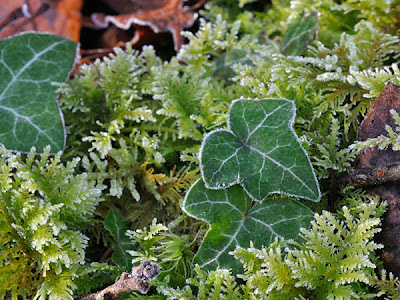This is why they are called Spider Orchids:
The group is considered to consist of several species. They differ in form of the flower, colour, height, flowering season and a number of other points. But there are many intermediate plants. Are they different species or just different variations of the same?
Sometimes their names add to the confusion. This one is the Early spider orchid (
Orchis aranifera), but it is not yet in flower now.
To have a species, there must be at least a 'barrier' between it and other species. In space: the plants don't grow in the same neighbourhood. Or in time: they flower in different seasons. Or they don't have the same pollinator. Or they are not fertile between them. Or ... The only fact that two populations, or two plants in a population, look different, is not enough.
Are they several species with hybrids between them, or variations of the same species? We don't really know.
Here are two representatives flowering now

This one, let's call it Western Spider Orchid (
Ophrys occidentalis) grows often in groups, sometimes on roadsides nearly on the tarmac.

The Small Spider Orchid (
Ophrys araneola) has tiny yellow-banded flowers and is more solitary.
 December hoarfrost gives everything that covers the wood floor, mosses and also the leaves of English Yvy (Hedera helix) a distinctive silver rim.
December hoarfrost gives everything that covers the wood floor, mosses and also the leaves of English Yvy (Hedera helix) a distinctive silver rim.


















































